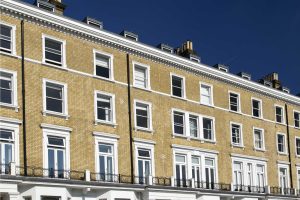Are you considering living in Bristol?
If you are thinking of moving to the city then you are in the right place!
The city offers residents a truly diverse and unique place to call home that is unlike any other location in the UK.
Living in Bristol is a choice that more and more people are making each year.
And it is no surprise!
Bristol is truly a city on the rise, boasting the 3rd best local economy in the UK as well as excellent employment opportunities.
Furthermore, the city celebrates a proud heritage of arts and culture and is famously the home of world-renowned artist Banksy!
In this article, we aim to provide you with all the information you will need if you are thinking of living in Bristol.
Ranging from the most desirable neighbourhoods in the city to the best place to grab a bite to eat.
We are certain that you will love living in Bristol and hope you enjoy reading our article just as much!
Best Places to Live
There are plenty of sought-after areas to move to in Bristol.
Depending on your personal circumstances some neighbourhoods may suit families or retirees, and some of the livelier areas will appeal to a younger population.
Whatever your reasons are for moving to Bristol, there will be a location that is just right for you.
Here is a brief outline of some of the best:
If you want to be near to the action but not actually in the middle of Bristol, Clifton makes a great location. Home to Clifton Suspension Bridge. It sits far enough away from the city centre but not too far to make commuting a drag. Popular with young professionals but also with families due to its safe village-like feel.
The Victorian area of Totterdown is packed with character. Victorian and Edwardian homes are ideal for growing families. The colourful terraces are a hallmark of the area. This location is close to Temple Meads railway station and an easy walk to the local town centre. It is rather hilly but offers some beautiful views.
Leigh Woods is best for those seeking a rural outlook. A residential area set amid plenty of greenery not far from Clifton and the 90-acre estate of Ashton Park. It is a unique area within Bristol and highly sought after. Homes are both hard to come by and expensive.
The buzzing Bristol city centre is another expensive location, however it convenient as it sits close to everything; culture, history, shops, and entertainment. Weekends see students from Bristol’s two major institutions of higher education out in force to enjoy all that is on offer. Definitely a younger person’s locale.
St George Park Offers great amenities along with excellent transport links to the city centre. It plays host to a number of properties that will see your money stretch that much further when compared to the city centre.
Housing (Buying/Renting)
Bristol is one of the ten biggest cities in the UK with 459,300 residents.
As you would expect there are hundreds of homes for sale or rent which cover just about every requirement possible.
From room rentals to multi £million period homes, it is all available in Bristol.
As of November 2021, the average cost to purchase a property stands at £352,952 while the average rental cost is £2211pcm.
If you are scouring the market for your first home, it is possible to purchase a 40% shared ownership flat with the option to the staircase to 100% in the future for £71,000, ideal for first-time buyers.
If you want to go it alone, studio apartments start at £90,000.
Growing families wanting to upscale can purchase a three-bed property for a very reasonable £235,000.
The rental market in Bristol is very active, mainly due to the two local universities. However, over the past 10 years or so renting has become a preferred option for many, offering much more flexibility than buying.
One and two-bed homes make up almost half of the available stock. One bed flats start at £449pcm, two beds from £795pcm and three-bedroom homes can be leased from £975.
Living Costs (Food/Groceries/Eating Out)
Although Bristol is not the most expensive city in the UK when it comes to living costs, it is not the cheapest either (that honour goes to Londonderry in Northern Ireland, followed by Carlisle and Bradford).
Bristol poses a huge choice when it comes to eating out however unless you earn a fortune it is impossible to eat out every day.
It is good to get an idea of everyday essential costs before you move to a completely different area, particularly grocery items.
Here is a quick summary of the cost of living in Bristol along with the cost of some basic shopping items:
- Family of four estimated monthly costs: £3,420
- Single person estimated monthly costs: £1,934
Grocery Prices
- 12 Eggs – £2.63
- 500g Cheese £4.86
- Loaf of bread £0.89
- 1kg potatoes £0.89
Save money by visiting one of Bristol’s “free” attractions, there are lots to choose from:
- www.visitbristol.co.uk/things-to-do/my-bristol/free-days-out
Transport
Bristol is well ahead of many cities in the UK when it comes to getting around the region.
It has won numerous awards over the last 20 years which recognise a commitment to green policies and sustainable practices.
Bristol is also the first UK city to ban diesel cars (as of 2021) during the core hours of every day.
Whether you choose to travel by road, rail cycle or by air, everything is easily accessible and convenient in Bristol.
The main M4 motorway connects the city on an east-west axis from London to West Wales, and the M5 is a north–southwest axis from Birmingham to Exeter. The M49 motorway is a shortcut between the M5 in the south and the M4 Severn Crossing in the west, and the M32 is a spur from the M4 to the city centre. The Portway connects the M5 to the city centre.
Two railway stations serve the city, Bristol Temple Meads and Bristol Parkway offering services to plenty of major destinations including London, Cardiff, and Birmingham.
Public transport consists primarily of the First West of England bus network. Other providers are Abus, Stagecoach West and Stagecoach Southwest. Those who can’t or don’t drive have access pretty much all over the area.
Bristol was designated as England’s first “cycling city” in 2008 and one of England’s 12 “Cycling demonstration” areas.
The Bristol & Bath Railway Path links it to Bath and was the first part of the National Cycle Network. The city also has urban cycle routes and links with National Cycle Network routes to the rest of the Country.
Local Airport
Just 7 miles from Bristol city centre, Bristol International Airport (BRS) provides flights to a swathe of destinations across the UK, Europe, and a number of international countries such as the USA, Canada, and South Africa.
Covid allowing, the eighth busiest airport in the United Kingdom Bristol Airport processes nearly 8.9 million passengers on an annual basis.
Plus, the airport has just put in an application for expansion which is still pending.
Necessary terminal expansion would come alongside further improved public transport options, road infrastructure, and enhanced environmental projects. Expanding capacity is projected to add 800 jobs at Bristol Airport and up to a further 5,000 jobs regionally.
It will also bring an estimated £430 million to the economy of the Southwest of England and South Wales at a time when this could not be more crucial.
If Bristol doesn’t have flights to a particular destination, Heathrow will.
Located around 100 miles east, a journey of around 1 hour and 50 mins from Bristol, Heathrow is Britain’s largest airport and the UKs aviation hub.
84 airlines operate out of Heathrow providing 203 destinations in 84 countries across the globe with a staggering 80 million passengers passing through its terminal annually.
Shopping
Retail therapy is a popular pastime for Bristolians. No wonder as Bristol Shopping Quarter is home to hundreds of shops, from high street favourites to independent boutiques, plus a multitude of great eateries.
Upmarket designer stores are located close to the lovely Park Street & Queens Road, one of the most iconic shopping areas in the city. Many of the shops are housed in beautiful Georgian buildings famous for their jewellery collections.
Wapping Wharf and Harbourside offer’s an altogether more eclectic mix of independent shops. From florists to an ethical clothes shop and from jewellers to gifts and homeware. It too is home to lots of restaurants and bars which are open pretty much 24/7.
If you love browsing through a market, fear not as there are plenty to choose from.
Every day of the week local traders, local food and drink producers and local art and craft specialists are showcasing their wares. The Nails Market (Fridays & Saturdays) and the Street Food Market (Mondays) are two particular favourites for locals.
Historic Locations
Although the city has undergone huge changes and modernisation over the past few years, it has an incredibly interesting history providing a number of visitor attractions.
Humans have inhabited the area as far back as 300,000 years!
Bristol was founded by 1000 and by about 1020, it was a trading centre with its own mint producing silver pennies bearing its name.
During the 15th century Bristol was the second most important port in the country and a visit to the SS Great Britain Museum ship and former passenger steamship is a must. Advanced for her time, she was the longest passenger ship in the world from 1845 to 1854. Designed by Isambard Kingdom Brunel (1806–1859), for the Great Western Steamship Company’s transatlantic service between Bristol and New York City.
Another of Isambard Kingdom Brunel projects is the Clifton Suspension Bridge. Almost 80 metres high and spanning the Avon Gorge, it has been photographed thousands of times. It took 33 years to complete. Pop into the visitor centre to find out all about its construction.
For a rundown of Bristol’s maritime history, you can’t beat a visit to Bristol Harbour. The Maritime Museum is packed with artifacts and exhibits featuring the lives of those who worked on the docks in the days when Bristol was a bustling port city.
Plus, many of the city’s top attractions are located at the Harbour, especially around Millennium Square, including Bristol Aquarium, the Watershed and the Arnolfini.
Entertainment
There is no chance of suffering from boredom that’s for sure. Bristol like most cities is full of things to do see and experience for all ages.
Many of Bristol’s districts have been awarded Purple Flag status which shows that it meets or surpasses the standards of excellence in managing the evening and night-time economy.
Young people (and those a little older who can still manage it), are faced with some great night-time venues.
One of the most notorious clubs is Motion. Voted as DJ Mag’s 11th best club in the world and the UK’s best large club, Motion is one of the world’s most exciting and ever evolving venues. Located in a fabulous listed Victorian warehouse Motion hosts a multitude of events including gigs, festivals, and sporting events as well as the infamous club nights that the venue is famed for.
Fancy a night at the theatre? Bristol Old Vic is the place to be. The present company was established in 1946 as an offshoot of the Old Vic in London. Bristol Old Vic is the oldest continuously working theatre in the English-speaking world. Full of nostalgic charm it has its own bar and kitchen serving light refreshments. The ideal place to enjoy music of all types, a comedy show, a serious play, or the annual pantomime.
Leisure Activities
Whether you’re looking for a great day out with the whole family, a romantic break for two or an epic solo adventure Bristol will have just what you’re looking for.
Get back to the 70’s and enjoy some roller skating at the BUMP Rollerdisco located in Redcliffe Wharf. Beginners, intermediate or expert skaters can make the most of the custom rink. All under cover it has a complete professional lighting package and a full-range club sound-system. Outside there is plenty of seating and refreshments for when you need a break.
Feed your adrenalin with some rock climbing. Crazy Climb Bristol is an all-weather attraction where everyone can enjoy the challenges. There are over 20 challenges to try, all with their own unique style. From flashy light-up volcanoes to teetering towers, something for the whole family.
Forster Racing School provides “Off Road Karts” and the perfect machinery for individuals and groups looking for a competitive off roading experience. As an activity, it is like no other and the buggies can accelerate from 0-60 in under 4 seconds with handling like that of a World Rally Car.
The city has a much-coveted relationship with the film industry. It is in fact a designated UNESCO City of film.
Now among one of 18 cities across the globe to have met the stringent UNESCO requirements. Aardman Animations is an Oscar-winning animation studio founded and still based in Bristol having produced movies such as Wallace and Gromit, Morph, Chicken Run and many others.
Schools and Education
Many prospective residents have been drawn to Bristol purely for its fantastic educational reputation.
At the last official count, Bristol was home to 129 infant, junior and primary schools, 17 secondary schools, three learning centres and two renowned universities.
A large proportion of state schools are deemed either “good” or “outstanding” by Ofsted.
Alongside the state provided education, Bristol has England’s second-highest number of independent-school places.
Independent schools in the city include Clifton College, Clifton High School, Badminton School, Bristol Grammar School, Queen Elizabeth’s Hospital (the only all-boys school) and the Redmaids’ High School (founded in 1634 by John Whitson, which is England’s oldest surviving girls’ school).
For students aged from 16 upwards, Bristol has two main colleges, City of Bristol College located on St George’s Road, near College Green with smaller sites across the city, and South Gloucestershire and Stroud College, which has a site at Filton in South Gloucestershire.
Alternatively, school leavers can attend one of three main sixth form institutions, St. Brendan’s Sixth Form College, North Bristol Post 16 Centre, and Redcliffe Sixth Form Centre.
The University of Bristol, a “redbrick” chartered in 1909 is a member of the Russell Group. Home to over 15,000 students, many of whom come from independent schools and middle-upper-class homes.
The University of the West of England (UWE) is made up of several campuses. Frenchay Campus is the largest in terms of student numbers, as most of its courses are based there. City campus provides courses in the creative and cultural industries, and is made up of Bower Ashton Studios, Arnolfini, Spike Island, and Watershed.
The University of Law also has a campus in the city providing law degrees, specialist legal training, continuing professional development courses for British barristers and solicitors, and is the UK’s largest law school.
Crime Statistics
If you’re thinking of moving to a new area, checking the local crime rates is one way of getting a feel for the place and figuring out the type of security you should/might have to consider.
It is true to say that no matter where you choose to live unfortunately, some level of crime is inevitable, and all towns and cities have good and bad areas.
That said, Bristol was named second (with Edinburgh taking the top spot) in a poll as one of the UK’s second safest cities in 2018, followed by Brighton and Hove, Southampton, and Cambridge. (www.metro.co.uk/2018/08/31/uks-safest-and-most-dangerous-cities-are-revealed-7901267/)
According to statistics from the ilivehereuk web site, ( www.ilivehere.co.uk/crime-statistics-city-of-bristol-bristol.html), as of March 2020, the level of crime in Bristol is considered as moderate, with a crime rate of 42.62 reported crimes per 1,000 residents.
It is important to point out that these are not all violent crimes, with a high number representing petty crimes such as shoplifting, anti-social behaviour and bicycle theft.
Compared to the city of London, which experiences much higher figures, Bristol has a relatively low crime rate.
It is good to know that when asked, the public’s response to crime is excellent, making living in Bristol feel very safe and for the most part, the city and its suburbs are happy, safe places for everyone.
Employment and Industry
Bristol experiences one of the lowest unemployment rates in the UK.
According to the Office for National Statistics there are currently 4303 vacant positions available across the city.
The average salary statistics released by plumplot (www.plumplot.co.uk/Bristol-salary-and-unemployment) stands at approximately £33,000 pa, whilst the average for a full-time job in the whole of the UK is slightly lower at £31,461pa.
Today Bristol is also a major tourist destination, and has significant media, information technology and financial services sectors.
Reports released in 2018 showed that the city is growing exponentially with a projected 2.3 percent annual growth rate until 2020, all good news for those seeking employment in the area.
A number of large companies are based in Bristol. The headquarters of Imperial Tobacco Group, the world’s fourth-largest international tobacco company is located here. The Port of Bristol is another large employer.
The financial services sector employs 59,000 in the city, and 50 micro-electronics and silicon design companies employ about 5,000.
In 1983 Hewlett-Packard opened its national research laboratory in Bristol.
With so many large corporations across the region, the opportunity to land a good job is entirely possible.
Taxes
The tax system in the UK can be rather complicated and there are a number of different taxes which have to be paid if you live, work, or buy a home in the UK.
If you have a job and are working on a PAYE basis, your employer will deduct the correct amount of tax from your wages automatically.
Alternatively, you may be self-employed.
In this case, you are expected to complete a self-assessment form declaring how much you have earned throughout the year and submit it to HMRC (Her Majesty’s Revenue and Customs, the government department responsible for assessing and collecting taxes).
For further information regarding taxation charges on your earnings, visit the Government web site where you will find a huge amount of information available: www.gov.uk/browse/tax
Value Added Tax is another form of tax. Commonly referred to as VAT it is levied at a rate of 20% when you buy goods or services in the UK.
When you see a price for something in a shop, VAT will already have been added.
There are also various items for which you do not have to pay any VAT, such as most supermarket food, children’s clothing, newspapers, and magazines.
Council Tax is mandatory and paid by each household to your local authority. The cost to pay is based on the estimated value of a property and the number of people living in it. Every property is put into a council tax band between A and H, based on its size, location, and a few other factors.
Money collected from Council Tax go towards supporting essential services such as Police forces, fire and rescue services, transport services, recycling and bin collection, improving parks and public spaces and extra support for elderly and vulnerable people.
Taxes are also paid to the government when you sell a home it is commonly known as Stamp Duty.
Not everyone will have to pay Stamp Duty.
If you’re buying a residential property in England and Northern Ireland, you will not have to pay Stamp Duty on the first £125,000 of a property’s purchase price.
First-time buyers will not pay any Stamp Duty on the first £300,000 of a property’s purchase price and then 5% for any amount above £300,000 up to £500,000. If the purchase price is over £500,000 you will pay Stamp Duty at the home mover rate.
Parks
Bristol is dotted with lovely parks and green areas. Here are some of the best:
Brandon Hill Park. This wonderful space is one of the oldest parks in the city. Located in an elevated spot, with pretty walkways, a children’s play area and Cabot Tower. Cabot Tower is a 105 ft tall tower and provides great panoramic views of the entire city.
Oldbury Court and Snuff Mills. Not actually a park but a huge estate, Oldbury Court cleverly combines riverside walks play areas and historic parklands providing a fantastic day out. Home to all manner of wildlife it is magical during each season of the year.
Greville Smyth Park. A very popular local community park in south Bristol, well known for its splendid trees, fine views, exciting children’s play area and varied community-led activity programmes. Ideal for exercise, dog walking, a leisurely walk or cycle.
Sports and Activities
The sports provision in Bristol is excellent and the city is represented by professional teams in all major national sports.
Bristol City and Bristol Rovers are the city’s main football clubs, and its supporters are very serious about their beloved teams.
Bristol Bears (rugby union) and Gloucestershire County Cricket Club are also based in the city and both also enjoy a very active and enthusiastic fan base following.
Many of the local parks double up as cycling or jogging areas with plenty of locals making use of the varied facilities.
When the weather is not so good, Bristol has plenty of indoor venues to explore for all ages and abilities, such as swimming pools, leisure centres and gyms.
Visit the link below for a comprehensive list of leisure centres in the region:




